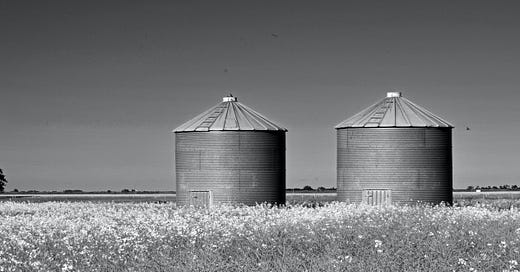Notice of Intent for building permits makes no sense to Area Directors
Once again, the provincial government is painting the entire province with the same brush, by creating regulations that make no sense in the Peace River Regional District, according to Area C Director Brad Sperling.
Although there has been no new Act, or amendments, the Agricultural Land Commission is insisting that in order to apply for a building permit in the Agricultural Land Reserve, applicants must give Notice of Intent to apply for a residential building permit.
An information bulletin from the ALC in June, stipulates that accessory buildings are included in the maximum floor area calculation of a residential dwelling. This means that the principal residential dwelling on a parcel and any accessory buildings can’t exceed a total floor area of more than 500 square metres, according to a report from Ashley Murphey, GM of Development Services with the Peace River Regional District.
Murphey said that regional district staff were informed by ALC staff in August that before constructing any accessory residential buildings on ALR land, such as a detached garage, an application to the ALC is required. This would mean a Notice of Intent or a non-farm use application. The PRRD permitted the construction of accessory buildings, as long as they didn’t contravene the district’s zoning bylaws. But ALC staff has stated that since the ALC Act doesn’t specifically permit accessory residential buildings, they are essentially prohibited.
“A lot of clarification is needed,” said Chief Administrative Officer Shawn Dahlen when Murphey’s report was presented to the October 19 Electoral Area Directors Committee meeting.
“We’re not the only ones who have been doing things differently to date. It’s pretty clear that this significantly changes the way we've been doing business for a number of years,” said Dahlen. “When you’re looking at residential use as opposed to agricultural use, there needs to be significant clarity as to what that means, in having to submit notices of intent, if you’re just going to build a detached garage.”
Murphey felt that these changes weren’t really a surprise, when it comes to the ALC Act, regulations, and interpretation.
“I think where we’ve been struggling is the recent information and policy bulletins being released by ALC staff are their interpretations of the ALC Act and regulations. That’s where the directives have come from recently, that Notices of Intent are required for accessory residential structures on ALR lands.”
This week, Murphey will be in Victoria for the Association of Regional District Planning Managers Conference, and says ALC representatives will be in attendance, and she is determined to bring answers back to the PRRD.
“Notice of Intent for these accessory structures is becoming quite challenging to regional districts around the province, as well as adding additional time to the planning process,” she said. However, it does sound like the ALC “is trying to get some feedback on some of these changes and processes.”
Area D Director Leonard Hiebert agreed that clarification is needed. “When they say residential structures, to me that means a house.”
“I’m on a farm, I need a shop or a small building that they might classify as residential, but I’m using it for a farm.”
Hiebert added that clarity and definitions are going to be crucial for anyone who is trying to be in compliance with this directive.
“It’s like a broken record, they keep painting this province with one brush,” said Sperling. “A notice of intent? What does that mean? You either do it or you don’t.”
Dan Rose, EADC Chair and Area E director said that as far as he knows, the PRRD is not obligated to enforce the ALC Act.
“If they go ahead and develop their version of the regulations without any kind of engagement, all this is going to do is destroy the relationships that we’re trying to build,” Rose said.
“If someone comes to us to apply for a building permit, are we going to say no because they haven’t come to us with a Notice of Intent? I don’t think so.”
Dahlen said that staff is committed to continuing to bring that information back. “I think it’s very important in how we do our day-to-day business at the regional district. Ashley is committed to making sure we have a report come back with any additional information she receives.”



